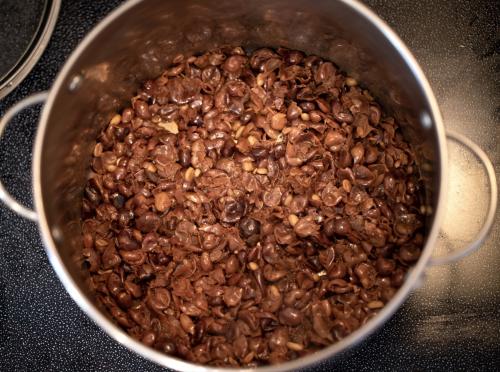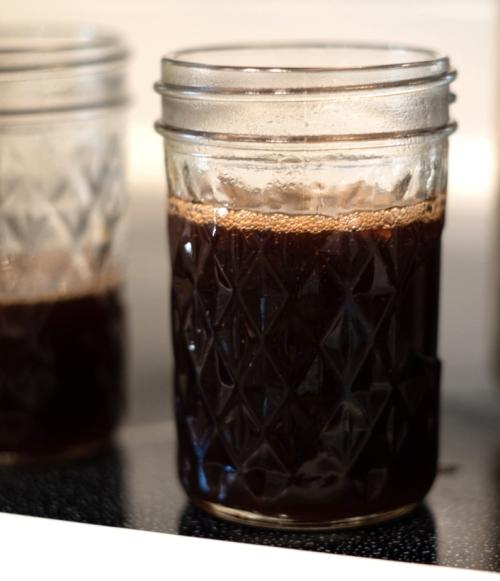
From left: Riley Gibson-Graf (project photographer/videographer), Melina Devoney (primary investigator), Timothy Buensalido (research collaborator)
Melina Devoney: Cascara Jelly Production Potential for Smallholder Farms in Huehuetenango, Guatemala
More than ever, coffee farmers face constant economic stress and uncertainty; exacerbating the volatile international coffee market are the increasing impacts of climate change and the COVID-19 pandemic. Most farmers earn only a few dollars per day.
Cascara, the bittersweet fruit surrounding the coffee bean that is usually discarded, may supplement farmer income because it has potential for a wide range of food products. Among them is fresh cascara jelly, a novel condiment that had no published methodology before our study. A market for “upcycled” (recycled at a higher value) cascara products also presents a strategy to tackle agricultural waste, considering the immense volume generated by the coffee value chain.
With the help of the Henry A. Jastro Graduate Research Award, my research partner, Timothy Buensaliso, and I were able to conduct a feasibility study for cascara jelly production and marketing. Like most researchers in the past few years, we had to adapt our original plan of traveling to the coffee-producing region of Huehuetenango, Guatemala for an in-person feasibility study to one that was conducted in Davis, CA and relied on remote communication with a key informant in Huehuetenango.
The goals of our project were to reduce agricultural waste and create additional revenue by developing a jelly condiment from cascara. This project included in-home jelly recipe trials, a literature review of the socioeconomic and environmental impacts of cascara and estimates of its nutritional content and mass flow (the movement of material matter), sensory surveys, and a feasibility survey for Guatemalan coffee farmers. With the help of videographer/photographer Riley Gibson-Graf, a bilingual methodology was created for both coffee producers and connoisseurs alike, in both print and video formats: (English) (Español)
Sensory surveys, conducted at the UC Davis Coffee Center and Trader Joes, suggested that cascara can be upcycled into marketable jelly with high liking scores. Based on estimated calculations from the literature, cascara jelly could be a good source of caffeine, chlorogenic acid, fiber, vitamins and antioxidants.

The farmer survey revealed economic barriers to jelly production. The farmers currently lack time, equipment and ingredients to produce cascara jelly in their homes/farms, but are open to producing jelly if these barriers are removed. This suggests a coffee cooperative, with shared resources, could make jelly production more feasible. Participants indicated having product samples, and local market testing to determine if producing cascara jelly was economically feasible was necessary before investing in jelly production.
The potential environmental benefits of cascara jelly are high; it may divert nitrogen, biological and chemical oxygen demand, environmentally-toxic chemicals, and carbon dioxide from the wastestream. However, more research is needed to test these calculated estimates.
I am excited to see how Tim’s market research will further these findings, as well as for the very positive reviews of our jelly. We hope that our research provides a step forward for both producers and consumers in building equitable and environmentally sustainable markets in the agricultural sector.

